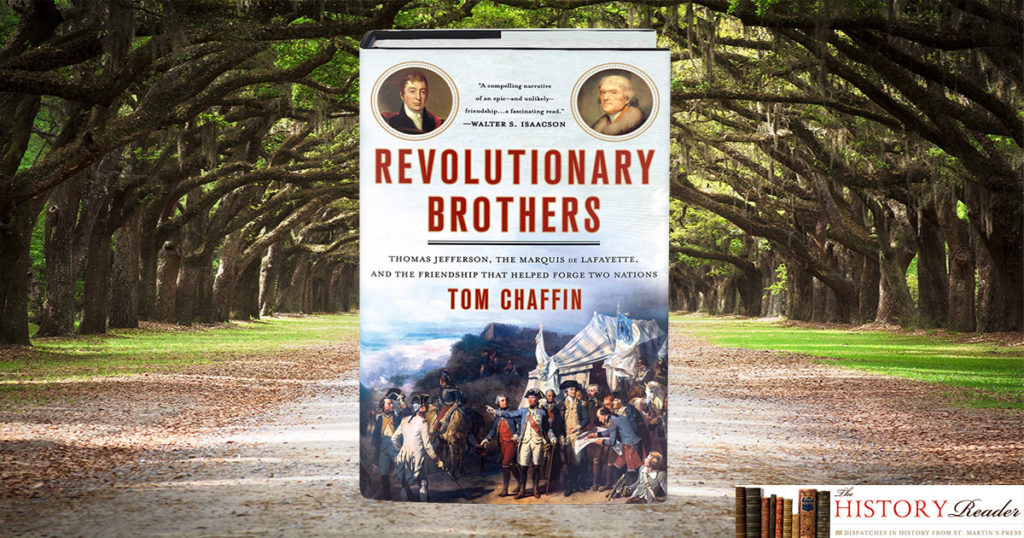by Tom Chaffin
In Tom Chaffin’s second excerpt from Revolutionary Brothers, the Marquis de Lafayette inspects the Continental Army for the first time in 1777. Although the Army is raggedly dressed and poorly armed, Lafayette acts with grace and humility as General Washington displays his troops.

At City Tavern, Washington invited Lafayette to join him the next day, August 1, 1777, for a tour of defenses along the Delaware River. As Philadelphia braced for attack, hopes for thwarting the city’s capture focused on forts and gun batteries along the river that flowed by it. A week later, at noon on August 8, Lafayette got his first glimpse of the Continental army. At an encampment eight miles north of Philadelphia, near Germantown, Pennsylvania, he joined Washington for a review of troops. Lafayette refrained from critical comment that day, but found the scene at once impressive and dispiriting: “About eleven thousand men rather poorly armed, and much worse clad, presented a singular appearance,” he recalled. “In the midst of a great variety of clothing, sometimes even of nakedness, the best garments were a sort of hunting-shirts, loose jackets made of grey linen, very common in the Carolinas.”
Also present that day were four other generals—the American-born British aristocrat William Alexander, better known as Lord Stirling, Nathanael Greene, Henry Knox, and Adam Stephen. Since arriving in Pennsylvania, Lafayette had heard enough to form opinions of several generals; and he found two he saw that day wanting: Lord Stirling, he had concluded, was “more brave than judicious” and Stephen was “often intoxicated.”
Washington required no outsider to alert him to his army’s shortcomings. For two years he had pressed Congress for better funding and recruits. Watching silently as Lafayette took in the scene, he imagined how his troops must appear to someone accustomed to a better-equipped, better-trained force.
Finally, no longer able to contain himself, Washington commented to Lafayette, “We should be embarrassed to show ourselves to an officer who has just left the French army.”
“I am here to learn, and not to teach,” the young officer answered.
Word of the marquis’s humility quickly circulated among Continental army officers, and regardless of his artful reply’s sincerity, he was also mindful of its likely impact: “That tone,” he later reflected, “produced a good effect, because it was unusual for a European.”
By then Lafayette had already accompanied Washington to the army’s newest encampment, close to Little Neshaminy Creek, near Warwick Township. Not far from there he moved into a two-story stone dwelling called Moland House that for the past few weeks had served as Washington’s headquarters (and which survives today). Commented Timothy Pickering, the Continental army’s adjutant general, “There has been an addition to the general’s family lately—the Marquis Lafayette, of one of the first families in France, a young gentleman of modest manners.”

Want to read on? Check out a previous excerpt this or order Revolutionary Brothers below.
TOM CHAFFIN is the author of, among other books, Giant’s Causeway: Frederick Douglass’s Irish Odyssey and the Making of an American Visionary; Sea of Gray: The Around-the-World Odyssey of the Confederate Raider Shenandoah; and Pathfinder: John Charles Frémont and the Course of American Empire. His writings have also appeared in the New York Times, the Oxford American, Time, Harper’s, and other publications. He lives in Atlanta.
